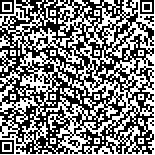| Quote
: |
曹惠敏,刘冬书,雷宁,李延晖,张蓉.基于代谢组学研究补肾解毒方对辐射损伤大鼠的防护作用机制[J].湖南中医药大学学报英文版,2021,41(6):852-858.[Click to copy
] |
|
| |
|
|
| This paper
:Browser 1812times Download 565times |
| 基于代谢组学研究补肾解毒方对辐射损伤大鼠的防护作用机制 |
| 曹惠敏,刘冬书,雷宁,李延晖,张蓉 |
| (苏州大学药学院, 江苏 苏州 215021;火箭军特色医学中心, 北京 100088;火箭军特色医学中心, 北京 100088;锦州医科大学, 辽宁 锦州 121001) |
| 摘要: |
| 目的 基于代谢组学初步探究补肾解毒方对辐射损伤大鼠的防护作用机制。方法 将60只雄性Wistar大鼠随机分为假照射组、2 Gy辐射模型组、4 Gy辐射模型组、2 Gy补肾解毒方干预组和4 Gy补肾解毒方干预组,每组12只,假照射组和辐射模型组给予生理盐水灌胃,补肾解毒方干预组给予补肾解毒方灌胃[组方生药等效剂量9.45 g/(kg·d)],连续灌胃10 d。第11 天,除假照射组外,其余组均进行相应剂量的γ射线全身辐射,辐射后24 h和72 h分别收集各组大鼠血清,高效液相色谱串联质谱靶向检测大鼠血清中氨基酸和酰基肉碱的含量。结果 与假照射组相比,辐射大鼠血清代谢轮廓明显改变,血清中赖氨酸含量明显升高(P<0.01),瓜氨酸、谷氨酸、组氨酸、脯氨酸含量明显降低(P<0.01),十四碳烯酰肉碱和苏氨酸水平先降低后升高(P<0.01)。与辐射模型组相比,补肾解毒方可改善辐射大鼠血清代谢轮廓,明显回调辐射大鼠血清中瓜氨酸、谷氨酸、组氨酸、赖氨酸、脯氨酸、苏氨酸、十四碳烯酰肉碱含量(P<0.01或P<0.05),改善精氨酸生物合成、精氨酸和脯氨酸代谢、组氨酸代谢、D-谷氨酰胺和D-谷氨酸代谢等途径。结论 补肾解毒方可能通过回调辐射大鼠血清中部分氨基酸和酰基肉碱含量,改善相关代谢通路,发挥辐射防护作用。 |
| 关键词: 补肾解毒方 辐射 代谢组学 氨基酸 酰基肉碱 |
| DOI:10.3969/j.issn.1674-070X.2021.06.007 |
| Received:February 25, 2021 |
| 基金项目:国家自然科学基金面上项目(81673873)。 |
|
| Mechanism of Radiation Injury Protection of Rats of Bushen Jiedu Prescription Based on Metabonomics |
| CAO Huimin,LIU Dongshu,LEI Ning,LI Yanhui,ZHANG Rong |
| (School of Pharmacy, Soochow University, Suzhou, Jiangsu 215021, China;Rocket Army Characteristic Medical Center, Beijing 100088, China;Rocket Army Characteristic Medical Center, Beijing 100088, China;Jinzhou Medical University, Jinzhou, Liaoning 121001, China) |
| Abstract: |
| Objective To explore the protective mechanism of Bushen Jiedu Prescription on radiation-damaged rats based on metabonomics. Methods 60 male Wistar rats were randomly divided into sham radiation group, 2 Gy radiation model group, 4 Gy radiation model group, 2 Gy Bushen Jiedu Prescription intervention group and 4 Gy Bushen Jiedu Prescription intervention group, with 12 rats in each group. Sham radiation group and radiation model groups were given normal saline by gavage, and the Bushen Jiedu Prescription intervention groups were given Bushen Jiedu Prescription [equivalent dose of crude drug was 9.45 g/(kg·d)] by gavage, for 10 consecutive days. On the 11th day, except for the sham irradiation group, the other groups received corresponding doses of γ-ray whole body radiation. After 24 hours and 72 hours after irradiation, the serum of rats of each group was collected. The content of amino acids and acylcarnitine in the blood of rats was detected by high performance liquid chromatography-mass spectrometry. Results Compared with the sham irradiation group, the serum metabolic profile of irradiated rats changed significantly (P<0.01). The content of lysine in the serum was significantly increased (P<0.01), the content of citrulline, glutamic acid, histidine, proline was significantly reduced (P<0.01), and the levels of tetradecenoyl carnitine and threonine first decreased and then increased (P<0.01). Compared with the radiation model group, Bushen Jiedu Prescription improved the serum metabolic profile of irradiated rats. The content of citrulline, glutamic acid, histidine, lysine, proline, threonine, and tetradecenoyl carnitine in the serum of irradiated rats was significantly returned (P<0.01 or P<0.05), and improved arginine biosynthesis, arginine and proline metabolism, histidine metabolism, D-glutamine and D-glutamate metabolism and other metabolic pathways. Conclusion Bushen Jiedu Prescription may improve the related metabolic pathways and exert radiation protection by adjusting the content of some amino acids and acylcarnitine in the serum of irradiated rats. |
| Key words: Bushen Jiedu Prescription radiation metabolomics amino acids acylcarnitine |
|

二维码(扫一下试试看!) |
|
|
|
|


